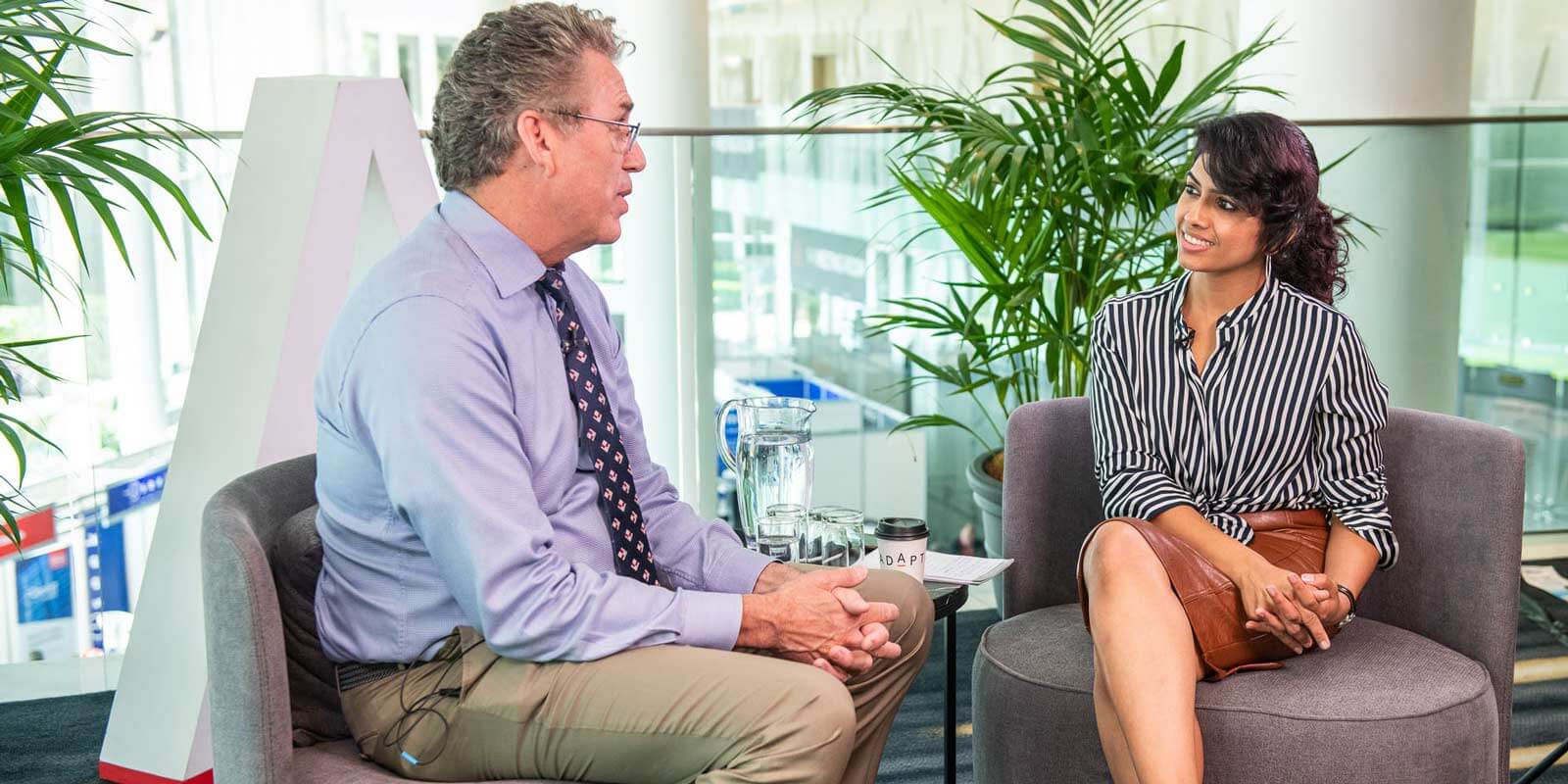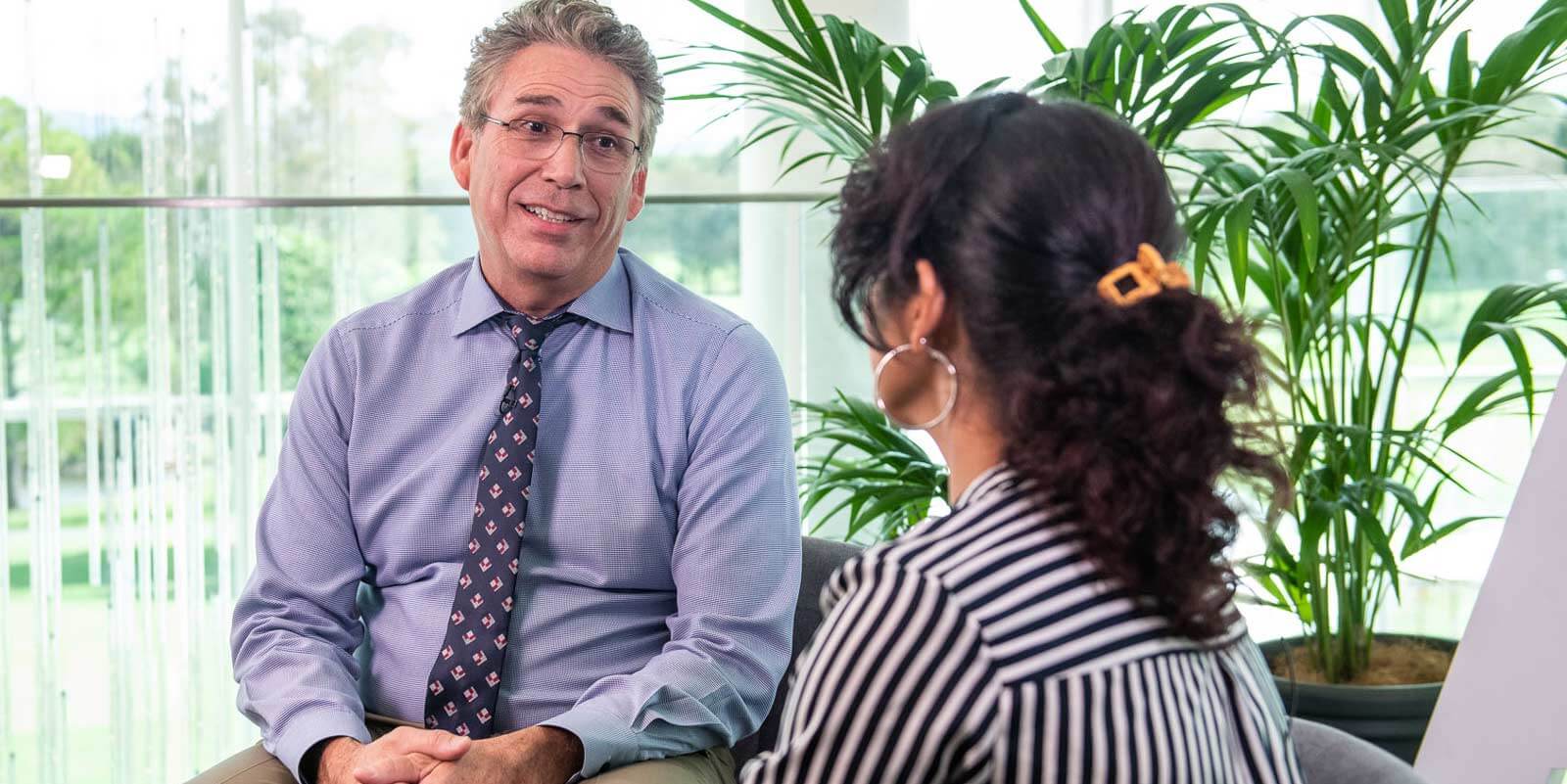Russ Matulich is the Founder and Chief Executive Officer of RTI, a leading independent undersea cable owner providing large-scale network solutions across a wide variety of industries including cloud companies, network operators, regional carriers, global enterprises, content providers and institutions for higher learning.
Speaking with ADAPT’s Senior Research Strategist Aparna Sundararajan at ADAPT’s CCDC Edge, Russ Matulich shares how to enable innovation at the front-end of network operations and his experience of changing strategies in times of national emergencies.
Aparna Sundararajan:
Could you tell us a little bit more about your company, and what is your work here?
Russ Matulich:
Very happy to do that. First of all, thank you for inviting me. I think this is an excellent conference, and to have this amount of people come together as a community, is amazing.
As for RTI, it is the world’s largest neutral international network, and what does it mean to be the largest, we have 38110 km. of fibre-optic cable, they go under the ocean, they connect to three continents, seven cities, and including here in Australia.
We’ll talk about those specifically. So, what does it mean to be neutral? It means that we connect into neutral data centres, and anybody could connect to us there. So, we don’t do business with just any certain category of companies, we do business with everyone. We don’t discriminate based on whether they’re carriers or operators or enterprise, and we don’t discriminate based on this size, whether they’re buying something small, or something large. So, in total, we’ve got about 500 million U.S invested in international networks and I run the company day-to-day.
Aparna Sundararajan:
Now, at ADAPT, we have been talking about one of the core competencies, just to drive innovation and transformation. It would be interesting to understand, how as a networking operator, you enable innovation and transformation, at the front end, of the business.
Russ Matulich:
Happy to talk about that.
Firstly, only last year maybe a year and a half ago, Australia was the most connected country on the planet, domestically, with the least amount of international connectivity. So good luck sending a file from Perth to Sydney, but if you wanted to go from Sydney, to the rest of the world, then it’s very difficult, right?
You must have heard, in some cases, in other countries you have data caps, but there was not enough international capacity until the last year and a half, and since then there have been a hundred and seventy six terabytes getting connected to Australia from various countries including Singapore and the United States. So, when it comes to, first, being able to do innovation, we must deliver services to different places, in a new way. As far as RTI is concerned, we are the, we landed the first new cable, new fibre optic cable ever, on the East Coast of Australia, into Maroochydore, in the Sunshine Coast.
So, actually, as we speak, the final tests are being done, but it’s run perfectly for three weeks down, so we’ll put out a press release in the coming days, that will show that after five years of work, we are passing traffic directly into the Sunshine Coast; into Sydney as well. So, that network connects directly from Sydney and Sunshine Coast to Guam, and then on to the rest of Asia. So why is that significant? Well in recent, well right now there is COVID-19, right, there is CB 19, and you have other national emergencies, you know bushfires, and the things that create emergency services. The need for dependable emergency services, right now, there are only a limited number of terrestrial routes between Sydney and Brisbane.
So, what we have built, in addition to landing our cable in Sydney, is we have another direct route, that goes out to the ocean, between Sydney and then comes into the Sunshine Coast. So, not just for emergency services, but also for defence, for security, network security, all the things that are critical to governments and enterprises and carriers. So, we allow another option for diversity.
The first thing, in order to innovate, is diversity. You must have some diverse network. Most of the big large content providers have a minimum if they can get a minimum of six or seven different networks, but they’ll take any number that they can get. The bigger carriers always have three different networks.
When I’m saying diverse, I mean physically diverse networks, and that’s critical because, force measure events, flu, and epidemics, and floods, and tsunamis, and fires, are becoming more common. So, in the end if these companies can’t deliver traffic during an emergency, then they just get out of business. You know the market is brutal, so that’s the first way. The second way in which we deliver innovation is through how customers procure our services.”

So, for an industry that delivers, you know the world’s latest and greatest in terms of automation and technology, it is the worst at how we do business bilaterally. It’s face to face and its contracts, and I understand that. You know I come from a background of relationships, and RTI is connecting into different cultures, and different countries, different geopolitical environments. However, much of the face to face can be done away with, and procured online, through automation. In fact, this is a perfect example, this time, now, and when we’re at this conference.
So much of the needs, for telecommunication services, whether it’s fibre, or big files, or small files, or just emergency video conferences, should be able to be prepared online, and immediately and so RTI is also delivering that. We are made up of a, even though we’ve got a large sum of money invested, we were made up of just ten subject matter experts, and about thirty people in total. So, again first thing is, delivering diverse services, with the latest and greatest 100 Gig technology, which is turning up as we speak, and the second is, diverse locations that are new to Lanny’s, and then the last is, making sure that we deliver, and allow customers procure, in a unique way that makes it a much more efficient process.
Aparna Sundararajan:
How are you able to manage the changes that happen at a government level, and currently with the geopolitical scenario, is it really affecting business, do you have to change your strategies, or the way you liaise with the government?
Russ Matulich:
First, it’s a great question, when you take an example, two of our cables right now are pending into China. So, they go through the PRC (People’s Republic of China) waters into Hong Kong. The only way to deal with governments, my government, the United States, and the government of China, is transparency, as unusual as it sounds. So when we do a strategic contract, to make sure that the process works the way it should, we have to go to what amounts to the Communist Party and show them a copy of the contract and make sure that everybody approves that, within that regime, and then take that same contract to the US government agencies, and have them approve it.
So, when we’re working on those important types of contracts that are really the bedrock for us as a company, they take a long time, about two and a half years.”
So, the way that you get those done is, unfortunately, I’m coming up on six million miles of air travel, and our team is, we always joked that our office suite is 23 B, which is seen on any airline, that’s going in different directions. So travel to, you have to be willing to travel, those types of things have to be done face to face because there are different cultures, and then you have to find a unique team, that has the ability to go in and out, of these cultures, and understand the culture, and relate to them.
We’ve made a team-up of a, it’s a very diverse team, of Singaporeans, Scottish, Welsh, American, Chinese, Japanese, and Guamanian, you know, and that’s thirty, so it is super diverse. As far as women in our company, the three most strategic positions, our general counsel, our chief commercial officer, and our controller, are all very powerful women that make database decisions for the company.
 watch
07:55
watch
07:55






























